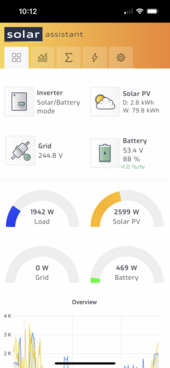kolek
Inventor of the Electron
- Joined
- Sep 29, 2021
- Messages
- 796
Two identical batteries in 2P16S setup.
Been sitting in parallel for 3 weeks.
During charging, 1 is charging at 16A, the other is charging at 25A. Voltage is identical between the 2.
This is according to the JK-BMS.
Verified the JK-BMS amperage difference with a clamp meter. The readings are accurate. Gap is real.
Checked Victron Smart Shunt, and the total amperage is 16+25=41A, so that checks out as well.
Everything is identical between these batteries. Same wire lengths, same wire. Same BMS settings.
How is this possible and if it's an indication of a problem, what would the problem be?
Been sitting in parallel for 3 weeks.
During charging, 1 is charging at 16A, the other is charging at 25A. Voltage is identical between the 2.
This is according to the JK-BMS.
Verified the JK-BMS amperage difference with a clamp meter. The readings are accurate. Gap is real.
Checked Victron Smart Shunt, and the total amperage is 16+25=41A, so that checks out as well.
Everything is identical between these batteries. Same wire lengths, same wire. Same BMS settings.
How is this possible and if it's an indication of a problem, what would the problem be?
Last edited:




